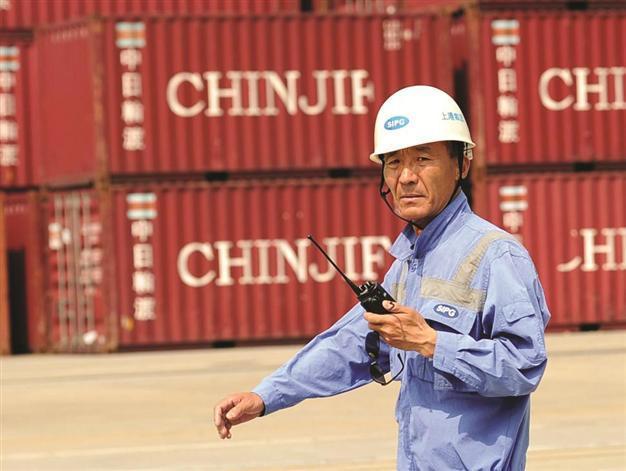China’s trade surplus up as imports weaken
LONDON - Reuters

A worker walks through Shanghai Container Port on July 10. China’s trade surplus hit $31.73 billion in June.
China’s trade surplus expanded in June as demand for imports fell more sharply than expected, stoking concerns about a slowdown in the world’s second-biggest economy, official data showed yesterday.China’s leaders have already moved to revive growth, raising interest rates twice since the beginning of June, and the trade data fuelled expectations that they will act again over the next few months.
The trade surplus hit $31.73 billion in June, up 42.9 percent from the same month last year, the General Administration of Customs said.
While exports for the month rose 11.3 percent year-on-year to $180.21 billion, imports climbed just 6.3 percent to reach $148.48 billion, according to the government’s data.
Domestic demand declines
“While exports increased at a low level, growth of imports was sharply slower than exports as domestic demand declined due to China’s slowing economy,” customs spokesman Zheng Yuesheng told reporters.
Compared with May, exports in June declined 0.5 percent and imports were down 8.9 percent.
“The data overall suggest that domestic investment and global growth are slowing,” Alaistair Chan, an economist with Moody’s Analytics, said in a research report.
China’s economy expanded an annual 8.1 percent in the first quarter of 2012, its slowest pace in nearly three years. Before the trade figures were announced, analysts were already expecting growth in China to have slowed in the second quarter.
China reported July 9 that inflation had slowed to 2.2 percent in June, the lowest level since the start of 2010. The central bank’s announcement last week of the second interest rate cut was also widely seen as a signal that China’s economy was slowing.
The government is scheduled to release the gross domestic product for the second quarter on Friday.
“China will definitely continue to introduce monetary easing policies,” said Citic Bank International’s chief economist, Liao Qun.
“There may be one interest rate cut and two cuts in the banks’ reserve requirement ratio in the second half.” The reserve requirement ratio is the amount of money that banks must hold in reserve. Lowering the ratio injects more cash into the economy.
While the trade data was generally seen as a disappointment, the customs administration’s Zheng said China still hoped to meet its goal of 10-percent import and export growth this year if Europe’s financial crisis did not worsen. He attributed this partly to a diversification strategy to emerging markets. “Trade growth almost stagnated with the EU, Japan and other traditional markets, but steadily grew with emerging markets,” Zheng said.told reporters.
















